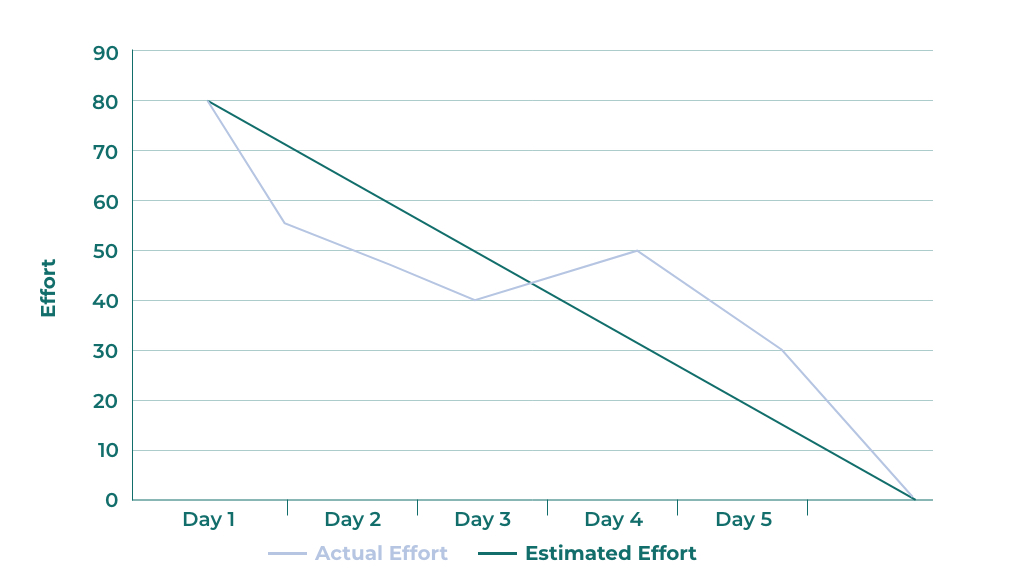Don't miss the chance to work with top 1% of developers.
Sign Up Now and Get FREE CTO-level Consultation.
Confused about your business model?
Request a FREE Business Plan.
A Guide to Tracking the Productivity of Resources While Outsourcing Mobile App Development
Table of contents

Planning to develop a mobile app? Well, Outsourcing mobile app development is a great idea!
But, you need to ensure that you get the best out of it from every side – may it be in terms of code quality or your spendings. Developing a mobile app is a tough task and managing a team of app developers is even tougher.
While a project manager will help you in the same – you shouldn’t rely and trust him completely when it comes to spending your hard-earned money. So, what’s the solution?
The solution is to track the productivity of your hired app developers and get the right work done at the right time. Tracking the productivity of a Mobile App Outsourcing Company is one of the most tricky challenges that product owners face these days and as a result, they end up spending more than needed.
But, don’t worry. We won’t let it happen with you. Here are five metrics that you can use to ensure that your developers are productive and you are getting good returns on your investment.
5 Metrics to Ensure Your Outsourced Mobile App Developers are Productive
While measuring the productivity of a developer simply by lines of code written and the number of hours worked is a terrible idea – you can use the below-mentioned methods to track how your developers are performing while developing your dream app:
1. Sprint Burn-Down Reports
A Sprint is basically a planned period of time during which developers are assigned planned tasks to complete. A sprint’s length is usually in between 1-4 weeks. And, at the start of each Sprint, developers talk with each other in the presence of the manager and plan how much work they can do during that period.
Whenever you hire an Outsourcing Mobile App Development company you can ask freely to be a part of such meetings to have an idea of how your team is planning to work. As the Sprint ends, the developers should report either you or the project manager on which tasks are yet to be begun, completed or in-progress.
Analyzing the burn down chart is a necessity for every project owner for the following reasons:
- It helps you in monitoring the project scope
- It helps you keeps the team of developers running on schedule
- It helps you compare their planned work against team progression
To make this chart, you need to sit with the project manager and decide how much work should be done – divide it into tasks, take an estimate from the team lead of your development team on how much time each task needs and divide the tasks among developers with a timeline which we call as sprints.
To understand it better, let’s take an example, suppose you have a project that you need to complete in 5 days. You have 80 hours and 8 tasks. Here is how you can track the entire process easily:
Step 1: Take an Estimate on Efforts Required
Plan your work in a way so that your developers need to work equal hours every day. In the above example, 80 hours over 5 days equates to 16 hours per day. So your estimated efforts come out to be:

Step 2 – Now See and Analyze the Actual Efforts
You should capture the total remaining efforts at the end of each day. Let’s say you get this data:

Step 3 – Get the Final Dataset and Plot a Graph
Now it is time to compare and see the difference between the estimated time and the actual time taken by the developers. You can plot a graph between the two to see the difference.

Your objective behind utilizing this metric should be to get the consistent delivery of all your work, as per your estimates. By following this metric you can acquire significant insights like:
- If your sprints are consistently finishing early that means you have less work scheduled for developers for one sprint.
- If the deadlines of your sprints are missing consistently that means, there is a loophole in your planning – either your team is less productive or you are asking for too much work in a single sprint.
- Your report should show a steep decrease in values, instead of a huge drop as the latter will show that the work was not assigned properly or logically.
By following these End Burndown Reports, you’ll have the option to clearly see whether your team has accomplished their productivity objectives or not. But, these metrics can be bogus if you aren’t conscious. If your team has defined low objectives for themselves – they may do the work freely or you might keep on thinking that the team is productive.
Or, they may report to you that the tasks are complete – when they are actually not – in such cases the accuracy of these metrics for the purpose of tracking productivity is untrustworthy.
Also Read: 14 Questions to Ask Before Hiring a Mobile App Development Company
2. Sprint Velocity Tracking
The tracking of sprint velocity should be a standard within your entire development team – whether they are in-house or you are working with an Outsourcing Mobile App Development Company. However, one of the greatest pitfalls with remote teams comes because of the lack of communication, and tracking sprint velocity helps eliminate the communication gap and holds the team responsible.
By measuring velocity you can:
- Set achievable delivery expectations and realistic sprint estimates
- know where your team is blocked
- Find unexpected challenges that were not represented during sprint planning
- Find out if your procedure changes have any outcomes (stable or increased velocity)
- You should also focus on the instability of your velocity. If you score high velocity suddenly, it implies that some process is now working, and you have to explore what is that.
Again, I will say every team’s velocity metric is unique and should not be utilized to compare one team with another in terms of efficiency or performance. Each team has a particular estimation culture and can have a different understanding of story points that you should account for.
3. Cycle Times
How much time your team takes to resolve the issues that come while development?
That is particularly what the cycle time metric looks at. As an individual’s issue rises, you can track how quickly each is resolved, and also observe when numerous issues arise immediately, whether developers are able to handle them at a decent rate or whether they get terrified.
Teams that continually fix issues inside a sensible timeframe, and don’t get frightened when numerous issues emerge without a moment’s delay can be trusted to always work well.
Another issue tracking system is envisioning all issues after some time: that are not yet touched, in progress or completed.
If you have a number of issues in progress or left outstanding, then these can rapidly pile up and surpass the issues that have been fixed.
To address this, there might be times when new work should be paused to remove the abundance of outstanding issues. Try not to think about this as an annoyance, it’s a need to keep the project on track.
4. Throughput
Your development team’s throughput is much like velocity. While velocity checks the final result, throughput includes errors and tasks in addition to features. Estimating throughput additionally helps to:
- Determine when the team is obstructed as the throughput metric drops.
- Know when the team is overburdened if you compare the average throughput against the present workload
So while velocity informs you about what your team did that can really be sold, throughput gives you a better idea of what their overall workload was for the given timeframes.
Also Read: White-Label or Custom Mobile App Development: Which Way to Go?
5. Open Pull Requests
At the point when your developers complete a pull request, they’ll add it to the code warehouse and afterward issue a pull request that solicits the rest of the team to re-examine the work.
Each pull-request will stay open until partners have offered feedback and a supervisor marks it as closed.
Having a number of open pull-requests shows that a ton of work is completing — however, it could likewise be an indication that your reviewers are lazy in reacting. It will help you find out the problem areas in your project.
So, that was it! I hope now you have an idea on how to track the productivity of your outsourcing mobile app development company. Let’s now wrap it up!
Wrapping Up
Numerous organizations – even those having in-house teams – some of the time outsource mobile app development when project loads are substantial or a specific skill that is required is absent in the team.
Outsourcing definitely comes with a few challenges – for instance, businesses are generally not able to observe closely what is being done. But, if you discover approaches to measure the status and progress of outsourced projects to guarantee they remain on track – your partnership can be a great match.

Rate this article!
Join 60,000+ Subscribers
Get the weekly updates on the newest brand stories, business models and technology right in your inbox.

Neha Verma is the Marketing Manager of Apptunix – a leading web and mobile app development company offering cutting-edge services in all the emerging technologies. Her write-ups are usually based on technology, mobile apps, marketing, and market research.

Telemedicine 2.0 - A Comprehensive Guide On What Healthcare Providers Need To Know?
Discover how the latest advancements like Artificial Intelligence in telemedicine are reshaping patient care. This comprehensive resource offers insights into the key trends and innovations driving this shift, providing valuable knowledge for healthcare professionals looking to stay ahead.
Download Now!Subscribe to Unlock
Exclusive Business
Insights!
And we will send you a FREE eBook on Mastering Business Intelligence.


















